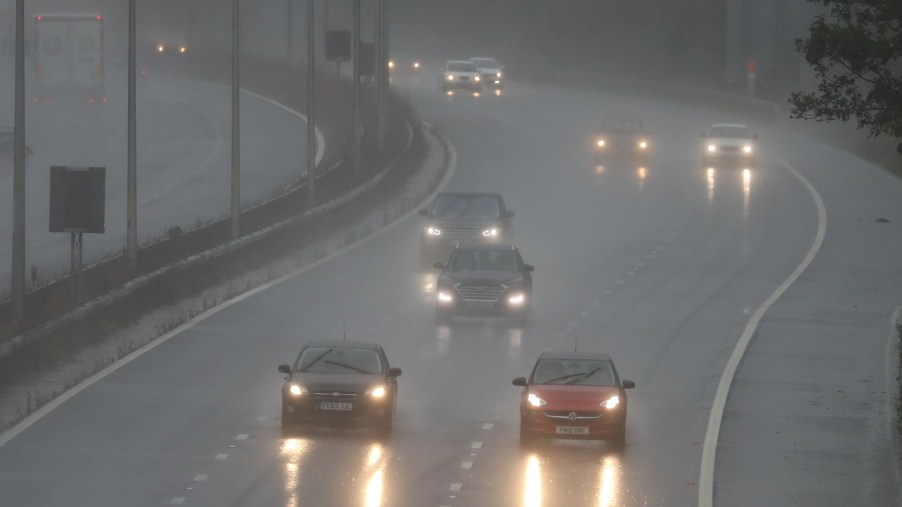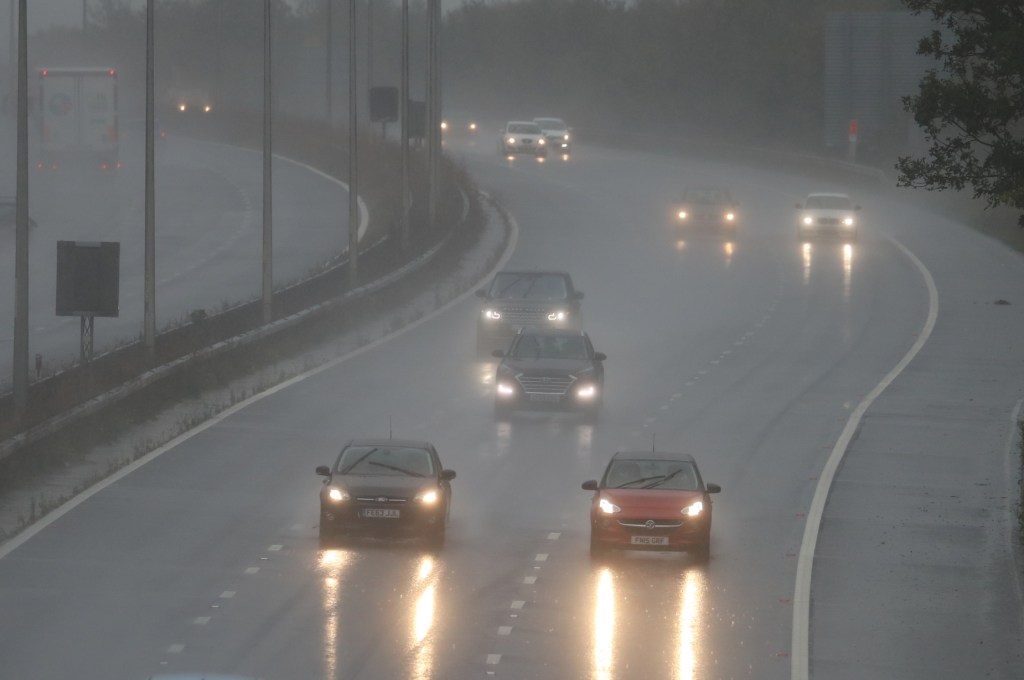
Should You Turn Your Hazard Lights On When Driving in the Rain?
Picture this: You’re out running errands on an overcast August day. You know it’s going to rain at some point, but you figure you can beat the bad weather. As you pull out of the driveway, the sky darkens just a little, and a light mist hits your windshield. Knowing you can brave the slight moisture, you carry on, determined to get on with your day. Everything is fine until you reach the highway. Suddenly, you are met with a torrential downpour. You can barely see the lines separating the lines on the road, much less the cars in front of or beside you. Panic sweeps in. You want to turn back, but you’re boxed in now with nowhere to go but forward.
How do you stay safe in such an anxiety-filled moment? There are two ever-pressing things you must address right away. First, you must find a way to better visualize where you are on the road. Second, you must make yourself visible.
Feeling safe on the road is paramount, and making a snap judgment on handling lousy weather may make things worse. For some drivers, it’s a knee-jerk reaction to flip on your hazard lights so that you will be a flashing beacon for the other cars around you. However, it’s really the absolute worst thing you could do amid inclement weather.
So why exactly is turning on your hazards the wrong move in this type of situation, and what should you be doing instead? Let’s take a closer look at the rules of the road we may have forgotten since taking our driver’s test.
Flipping on your hazards may incur the wrath of the law

If you’re considering turning on your hazards during a rainstorm, you will certainly want to reconsider. Especially since, in most states, it’s against the law. The Miami Herald reports that in the state of Florida, getting caught with your hazards while driving in the rain will cost you. This infraction is punishable by a $129 fine. Florida can be more challenging to drive in with its long rainy season, unlike safer states like Iowa and Tennessee.
Why would such a seemingly small thing draw the attention of law enforcement? Turns out, having your lights flashing can cause some serious issues for other drivers.
“The other day I was in my car, it was raining, and everyone around me had their hazard lights activated,” said Florida Highway Patrol Lt. Alex Camacho via an interview with the Miami Herald. “So while I’m patrolling, how am I going to see the one person who may have a true hazard? The main problem from my perspective is I’ll never know who is really in distress if everybody has them on.”
While hazard lights are used to indicate distress, they are not to be used while in motion. You should only flash your hazards when you’re stopped on the side of the road or in a funeral procession.
Hazard lights actually reduce visibility, not increase it
It may seem like turning on your hazard lights will increase your visibility in a moment of panic. Drivers who do this have good intentions. However, hazard lights make your vehicle less conspicuous to other motorists sharing the road with you.
Additionally, drivers may take your hazard lights in a way you do not intend. They may interpret that your car has stalled and therefore you are stopped. In an effort to avoid you, they may swerve out of the way or break swiftly. This could easily cause motorists to get into otherwise unavoidable accidents.
Don’t worry; there is a safe way to make sure you are adequately seen in stormy weather. It may just be a more straightforward process than you think.
How to stay safe on the road in the rain
So what is the right thing to do to make sure everyone stays safe? According to the Miami Herald, you should always keep your headlights on rather than your hazards. This is not to be confused with turning on your high beams, which can actually cause a glare. Simply turning on your normal headlights will be enough to alert fellow motorists of your position.


